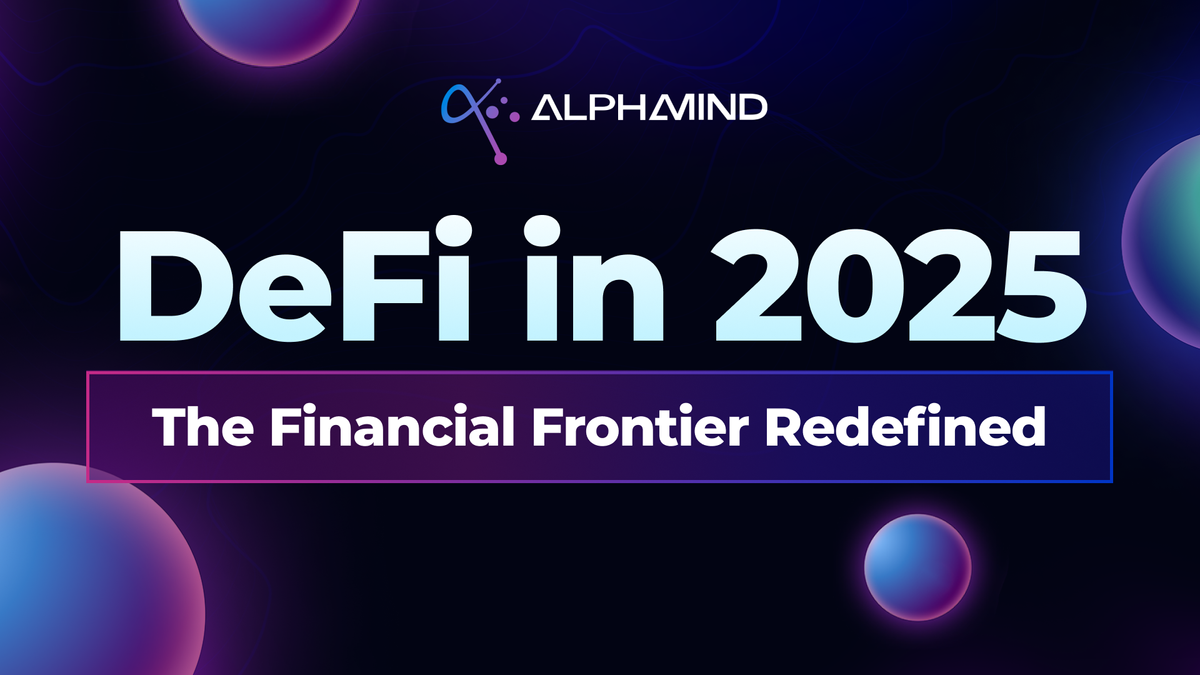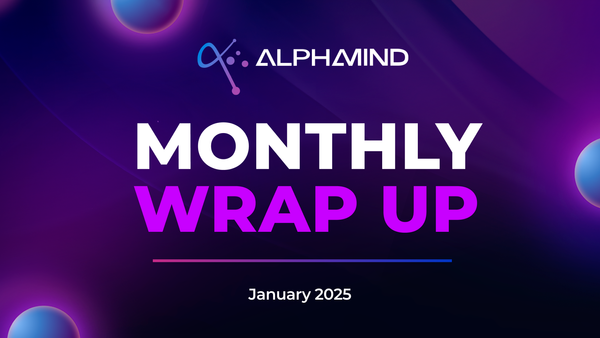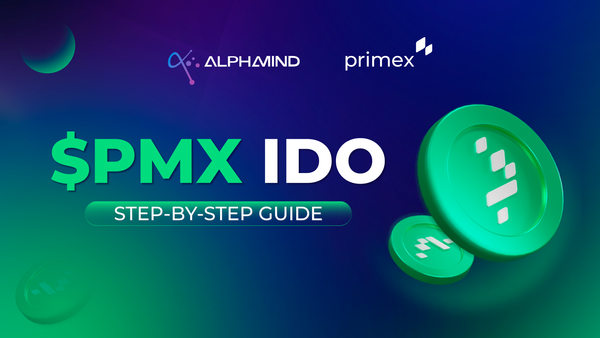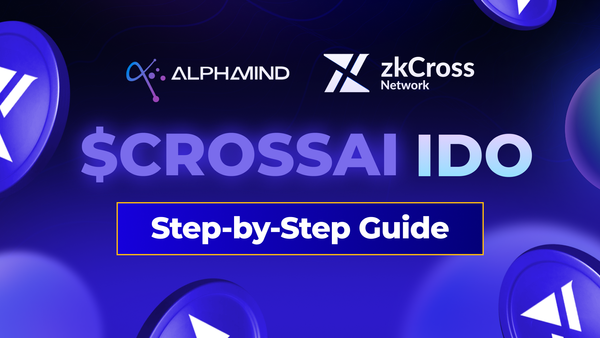DeFi in 2025: The Financial Frontier Redefined

In the ever-evolving landscape of Web3, few sectors have captured the imagination of investors and innovators quite like decentralized finance (DeFi). In 2025, DeFi isn't just an experiment in disintermediated finance - it’s an economic revolution.
Imagine a world where artificial intelligence automates wealth creation, cross-chain technologies make assets flow like water, and anyone with an internet connection can unlock financial opportunities that were once the preserve of the elite. This is the promise of DeFi in 2025, and it’s becoming harder to ignore.
Why is DeFi set to dominate this year? What new paradigms are emerging? And which projects are leading the charge? Let’s explore the data, trends, and breakthroughs shaping the narrative.
The 2025 DeFi Boom: Why Now?
The DeFi market in 2025 isn’t just recovering; it’s surging. While traditional finance grapples with higher interest rates and stagnant innovation, DeFi is becoming a cornerstone of the Web3 economy. Here’s what’s fueling the fire:
1. Explosive Market Growth
By January 2025, the Total Value Locked (TVL) in DeFi protocols reached $230 billion, up 35% from the same period in 2024, according to data from DeFiLlama. This growth is driven by increased adoption in both retail and institutional markets. Institutional DeFi usage has grown 60% year-over-year, with firms leveraging DeFi for yield generation, hedging, and liquidity management.
2. Cross-Chain Liquidity as the New Gold Rush
Fragmented liquidity has long been DeFi’s Achilles’ heel. However, innovations in cross-chain protocols are uniting isolated ecosystems. Projects like LayerZero and Axelar are enabling seamless asset movement between EVM and non-EVM chains. This interoperability eliminates barriers, creating unified liquidity pools that make DeFi accessible to more users.
3. AI Revolutionizing Financial Decisions
Artificial intelligence is becoming a catalyst for smarter financial strategies. Predictive analytics, automated trading bots, and market sentiment analysis are giving DeFi users an edge. Projects like Fetch.AI are applying machine learning to optimize decentralized exchanges and automate lending protocols.
4. Regulatory Clarity in Major Markets
After years of ambiguity, regulatory frameworks for DeFi have begun to crystallize in key jurisdictions like the EU, which recently implemented tailored provisions under MiCA (Markets in Crypto-Assets). This clarity has emboldened traditional financial players to dip their toes into DeFi, adding legitimacy and liquidity.
Emerging Use Cases for DeFi in 2025
DeFi is no longer just about borrowing and lending; it has evolved into a comprehensive financial ecosystem. Let’s explore the most promising use cases that are reshaping the space:
1. AI-Powered Financial Services ("DeFAI")
The integration of AI into DeFi is a game-changer. “DeFAI,” a term coined in late 2024, refers to decentralized finance applications enhanced by AI tools. For instance:
- SingularityDAO: Uses AI to manage dynamic investment portfolios called "DynaSets," helping investors maximize returns in volatile markets.
- Numerai: A protocol that crowdsources AI models to predict stock market movements, bridging traditional finance with DeFi.
- zkCross Network: zkCross Network has introduced the world’s first Mobile SuperApp powered by AI. This innovative platform automates market analysis, identifies profitable trading opportunities, and manages token swaps seamlessly across multiple blockchains.
AI-driven platforms are improving decision-making, reducing human error, and enabling microsecond trading, giving users an edge in a competitive market.
2. Cross-Chain Liquid Staking
Staking, once confined to individual chains, has evolved with cross-chain liquid staking protocols. These solutions allow users to stake assets on one chain while maintaining liquidity across others. Examples include:
- Lido Finance: Now supporting cross-chain staking on Ethereum, Solana, and Polygon, Lido has grown to over $17 billion in TVL.
- pStake: Allows users to stake assets while receiving liquid tokens that can be traded or used in DeFi protocols.
This innovation not only boosts liquidity but also enhances capital efficiency, making it a cornerstone for advanced DeFi strategies.
3. Decentralized Derivatives Markets
Derivatives trading in DeFi has matured significantly, offering everything from perpetual swaps to options. Successful players include:
- dYdX: Now a fully decentralized platform after migrating to Cosmos, dYdX processes billions in daily trading volume, with a focus on perpetual futures.
- Synthetix: A pioneer in synthetic assets, allowing users to trade derivatives tied to real-world assets like stocks, commodities, and fiat currencies.
Decentralized derivatives platforms empower users with sophisticated financial instruments, traditionally monopolized by centralized institutions.
4. Wallet Abstraction and SuperAccounts
DeFi has historically suffered from poor UX, but wallet abstraction is revolutionizing how users interact with the ecosystem. "SuperAccounts" combine multiple wallets and chains into a single interface, removing technical barriers. Key projects include:
- Argent: Offers a smart contract wallet with features like gasless transactions and social recovery.
- Safe (formerly Gnosis Safe): Introduced multi-signature wallets that simplify complex asset management for both individuals and DAOs.
By making DeFi more user-friendly, wallet abstraction is unlocking the next wave of mainstream adoption.
DeFi Projects Launched on AlphaMind
AlphaMind, a leading launchpad for DeFi innovation, has been instrumental in introducing cutting-edge projects to the market. Here’s a snapshot of what’s shaping the AlphaMind ecosystem:
- zkCross Network: A pioneer in cross-chain DeFi, zkCross Network combines decentralized chain abstraction technology with AI to create seamless trading and staking experiences. Their SuperApp is one of the first to merge DeFi and AI, highlighting the platform’s leadership in innovation.
The zkCross Network's IDO is Live on Alphamind, join now to participate in the IDO: https://app.alphamind.co/ido/67504be4960e2d6663f82bc0
Got some issues with the paticipation? Check out the step-by-step guide here.
- Eywa: Focused on cross-chain bridges, Eywa enables liquidity to flow across multiple ecosystems, solving a critical challenge in DeFi. With partnerships spanning multiple blockchains, the project is spearheading interoperability.
By offering resources, funding, and community support, AlphaMind continues to nurture projects that redefine DeFi’s boundaries.
More arguments on Why You Should Bet on DeFi in 2025 !
DeFi is more than a trend - it's an unstoppable force poised to redefine global finance. In 2025, several compelling factors make it one of the most promising narratives in the Web3 ecosystem. Here’s why it could be the year of DeFi:
1. Macro-Economic Tailwinds
DeFi is thriving in an economic environment that’s ripe for decentralized innovation. Central banks worldwide are grappling with inflation, currency devaluation, and economic instability. As a result, individuals and institutions are seeking alternatives to traditional finance, and DeFi offers:
- Hedge Against Inflation: Stablecoins and yield-generating DeFi protocols provide a way to preserve and grow wealth in unstable fiat environments.
- Accessibility in Emerging Markets: Regions with underdeveloped banking infrastructure, such as parts of Africa and Southeast Asia, are adopting DeFi for its ability to provide financial services without intermediaries.
2. Continued Institutional Adoption
Institutional players are no longer on the sidelines. With increased regulatory clarity in regions like the EU and Asia, major financial institutions are integrating DeFi strategies into their portfolios.
- JP Morgan On-Chain Repo Markets: JP Morgan's use of blockchain-based repo markets has demonstrated the potential of decentralized protocols in traditional finance.
- Circle’s Collaboration with DeFi Protocols: Partnerships between stablecoin providers like Circle and DeFi protocols have unlocked deeper liquidity and better financial products.
3. DeFi as the Engine of Web3
The DeFi narrative is inextricably tied to Web3’s growth. The rise of decentralized social media, NFTs, and metaverse economies creates demand for financial services like lending, trading, and staking. For example:
- Metaverse Lending Markets: Platforms like Aave are developing solutions to collateralize digital assets, such as virtual real estate and NFTs, enabling users to unlock liquidity without selling their holdings.
4. DeFi Surpasses Traditional Finance (TradFi) in Yield
The yield opportunities in DeFi continue to outpace those in traditional markets, driven by innovations like:
- Real Yield: Instead of unsustainable emissions, projects are focusing on revenue-sharing models, where protocol fees generate actual returns for users. For instance, protocols like GMX offer revenue from trading fees, attracting long-term participants.
- Liquid Staking Rewards: With Ethereum’s Shanghai upgrade in 2024 enabling unstaking, platforms like Lido and Rocket Pool are creating more demand for staking services, which provide attractive returns compared to TradFi savings accounts.
5. The Rise of "DeFi 2.5"
2025 isn’t just about traditional DeFi—it’s about the next iteration, often referred to as "DeFi 2.5." This phase combines the decentralized ethos of DeFi with TradFi’s structure and compliance, making it palatable to a broader audience. For instance:
- Hybrid Models: Protocols like Maple Finance and Goldfinch are bridging DeFi with real-world lending, allowing undercollateralized loans with institutional backing.
The Big Picture
In 2025, DeFi’s appeal lies in its ability to deliver something traditional finance cannot: inclusivity, innovation, and unparalleled financial freedom. With strong macroeconomic drivers, cutting-edge technological advancements, and an ever-growing community, DeFi is positioned to be not just a major narrative for 2025, but a cornerstone of the global economy for decades to come.




